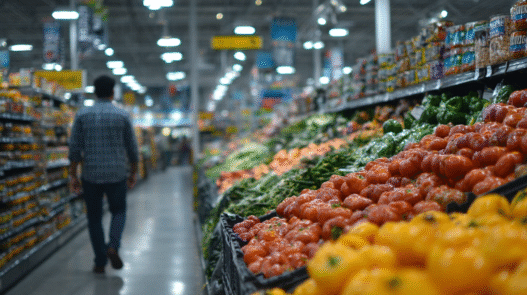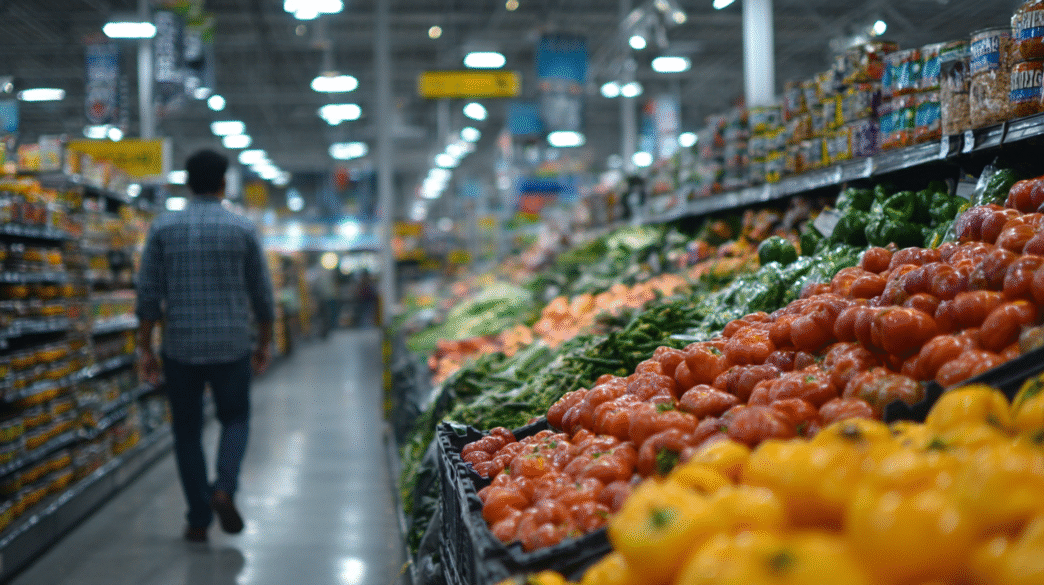Most grocery advice feels like homework. Clipping coupons, building a meal plan, tracking spending in spreadsheets. Ugh.
It's no wonder high-earning professionals toss those guides in the trash. They simply don't have hours to squeeze nickels and dimes out of a $300 bill. There's no escaping grocery inflation either. Wasting food is expensive. And…you're busy.
Fortunately, you don't need hours to make a dent in your grocery bill. You need ten minutes and three deliberate moves. The grocery industry relies on inertia, not ignorance. Break your habits just long enough to exploit their weak spots, and you can save $100 between now and Monday.
And no, I won't ask you to start living on beans. We'll just take a look at how it's within our reach to beat a rigged system with tactical strikes. So instead of hard-to-follow changes, you can adopt these grocery hacks that work fast enough to save $100 by Monday.
According to the U.S. Environmental Protection Agency, the average American throws away $728/year in food they bought but never ate. For a household of four, that's $2,913/year.
Not only that, over 30–40% of the U.S. food supply is lost or wasted before it can even be eaten. That's 335 billion pounds of food every year.
Once you know the literal and metaphorical cost of buying only to waste it, it's hard to go back.
Instead of trying to commit to hard-to-follow changes, I want to suggest an alternative: try these three tweaks this weekend to save up to $100 in cash and gain a good helping of mental peace along the way.
1. Change Your Store (and Let Curbside Do the Work)
Think of store choice as the single biggest variable in your grocery budget. According to analysis done by beloved podcaster, Lauren Torres (AKA Kitty), the same cart of basics could run $157 at one store and $82 at another.
That $75 saving is nothing to sneeze at. And at what cost? Just switching one squeaky shopping cart for another.
East or West, Lidl is the cheapes
Here's how to get it done:
On Friday night, place a curbside pickup order at a lower-cost chain you don't usually visit. On Saturday morning, drive in, pop your trunk, and compare the receipt to your usual spend.
You've just saved time and money. No wandering aisles, no learning a new floor plan. Ten minutes online, twenty minutes in the car, and you've proven or disproven the savings gap for yourself.
How much is at stake? A $45–$75 swing per trip is common. Do that twice a month and you're richer by ⁓$1,800 by year's end without lifting more than a finger.
2. Buy Protein Without the Branding
Protein is the heavyweight of every grocery bill. Meat, fish, eggs, dairy, they anchor the cart, and grocers know it. Which is why they've perfected the art of branding.
The packaging is designed to make you think the pricier option is healthier, cleaner, or somehow more authentic. In reality? Much of it comes from the same processors as the store brand. Harsh as it may seem, that farmhouse logo doesn't mean anything once it hits your skillet.
This weekend, you can try it out yourself. Swap one branded chicken pack for a store brand. Instant $6–$10 saved. Do the same for ground beef or salmon. Another $8–$12. Add eggs or shredded cheese to the swap. Shave off $5–$7 more.
These protein swaps won't feel like a sacrifice. Three shifts will knock $20–$30 off the bill in one shot. Stack it with your store change, and you're halfway to $100 already.
3. Stop Paying for Water
This is the industry's dirtiest trick: selling you water disguised as product. Liquid detergent, bottled marinades, ready-made sauces, even “premium” juice. They're all mostly water. Not only are you paying for a diluted product, you're paying to ship and shelve what you already have on tap.
Don't bankroll corporate water. Instead, replace liquid laundry detergent with concentrated sheets or powder. This will save you $5 or more every cycle.
The images above are screenshots from Walmart.com and show the disparity between liquid and dry detergents.
On the surface, the disparity doesn't seem that major. The liquid detergent costs $3.84 and washes 25 loads of laundry. Meanwhile, the powder detergent costs $36.18 and washes 130 loads. Seems pretty normal, right?
What if we do some light math and see how much that comes out to per load? The liquid detergent comes out to $7.18 per load, while the powder detergent costs $3.59 per load. That's a ⁓$4 difference! Plus, you're not paying for plastic bottles.
Same goes for drinks and juices. If you swap bottled juices for frozen concentrates or a filter pitcher at home, the difference per week could be $5–$7.
Choosing condensed tomato paste or spice packets instead of bottled sauces can save you $5–$8 per item.
You don't need to do all of these swaps this weekend. Give one or two of them a try, and you might just save $15–$20 with no change in quality of life.
Why These Grocery Tweaks Work Together
Each tweak works because it dismantles a different profit tactic.
The store switch blows up the convenience tax and saves you $40–$60
The protein swap strips branding premiums, saving you $20–$30
And the water cut removes fake volume pricing, which means another $15–$20 saved.
That's $75–$110. Right in line with the target.
Multiply that by 50 weeks a year and you're looking at $3,750–$5,500 in potential savings, tax-free. For physicians or other high-income professionals, that's the equivalent of bumping your investment contributions without changing a thing about your lifestyle.
Together, these three grocery hacks reset the baseline of your grocery bill without changing what you eat. You'll still grill chicken, still do laundry, still stock your fridge with drinks. The only difference is the receipt.
And unlike couponing or meal-planning, these hacks don't add work. They save you time by cutting out wandering, brand-surfing, and overpaying for illusions. And the best part? They're quick grocery savings that actually hold up trip after trip.
The Psychology of Grocery Stores
Why doesn't everyone do this already? Because grocery stores are designed like casinos. Bright lights, endless options, a mix of cheap “jackpots” and overpriced staples, they all push you toward default decisions.
The hacks I've mentioned above don't require willpower. They just pre-commit you to better outcomes. Curbside pickup shields you from sensory overload, protein swaps break the branding spell, and concentrated products train your eye back onto unit pricing.
Think of them as instant grocery budget fixes that save you cash without costing you time. No fuss, no muss.
Have you got some grocery hacks up your sleeve? Share them in the comments, and let's see if your trick can out-save these three!



















